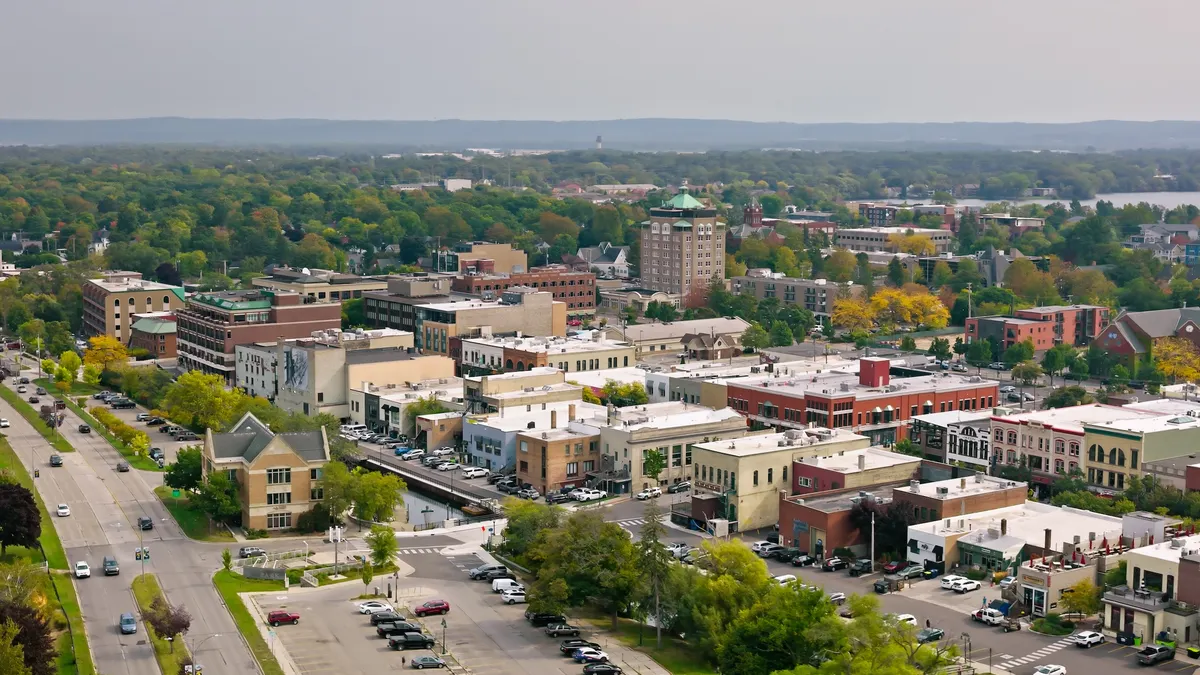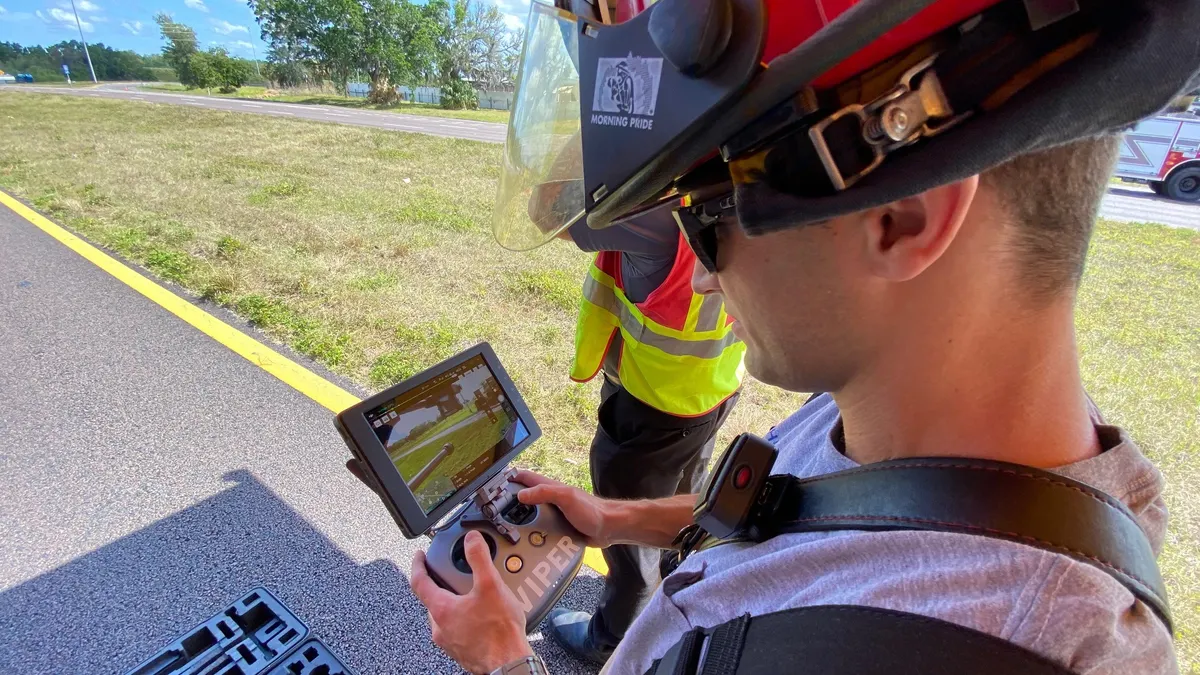Michigan’s Office of Future Mobility and Electrification, created by Gov. Gretchen Whitmer in 2020, set out to spur new investment and jobs from tech companies that focus on future mobility.
In July, Whitmer established the Michigan Advanced Air Mobility Initiative, a “whole-of-government strategy” to advance the state’s capabilities in this emerging field. She designated the OFME to lead this initiative in conjunction with other state agencies. “As the global competition for aviation and autonomous aerial mobility heats up, the United States must use every asset we have to design, test and build the uncrewed aerial systems” that will be needed, Whitmer said in a news release.
Justine Johnson, Michigan’s chief mobility officer since 2023, leads this and other initiatives. Smart Cities Dive spoke with Johnson to learn more about Michigan’s projects and goals for this program.
Editor’s note: This interview has been edited for length and clarity.
SMART CITIES DIVE: What are the goals of the advanced air mobility initiative?
JUSTINE JOHNSON: We're taking the same approach that we took with the auto revolution, building up the advanced air mobility industry from the ground up. Some projections show that the advanced air mobility market is projected to be about a $57 billion industry in the next five-plus years, and so we want to be prepared. We want our workforce to be prepared. We want our suppliers to be prepared and to be at the table for these opportunities.
How are you engaging with the private sector?
We have something called an advanced air mobility activation fund. That is where we provide grant funding to companies, whether they are early-stage companies or industry incumbents, with funding to deploy their solutions into the real world. We had our first round of grantees awarded last July, and we issued a second round of grantees this July.
What are some of your projects?
I just did a ribbon-cutting last week with Beta Technologies, and that was focusing on charging access for advanced aviation. They'll be installing charging infrastructure at four regional airports within the state of Michigan.
CVS Health is one of the recent grantees. It's their first state [where] they're going to be focusing on prescription drug delivery. Traverse Connect and Munson Healthcare did a series of demonstrations of moving medical samples [among Munson Healthcare campuses]. They did somewhere between 60 to 70 flights where they moved lab samples back and forth.
There's a ship-to-shore connection as well — drones being used to support a number of ships that are waiting for their place to berth. So instead of them waiting to move small pieces of supplies or equipment … you do that with a drone.
How do you work with these partners?
It can be from permitting all the way to deployment. So, if there are companies that may not be from the state of Michigan who are looking to deploy those technologies, but may be saying, “Where should I do this?” Okay, here's a location that might fit your needs.
We'll introduce them to the business community there. Sometimes we see this company is doing this and we have this type of technology, let's make some introductions. It's a bit of program oversight and it's a bit of continuing to make sure the local players on the ground are involved in all aspects of the work.
How are you working with the universities in Michigan?
The university partners are so important to this conversation. There's Western Michigan University. They [are a] top-tier university when it comes to all things around aviation. They also have programs to support drone prototyping, manufacturing, et cetera.
[The] University of Michigan is here as well. They were listed for the advanced air mobility activation fund, building out a space within their university for testing, education and more.
I think it's [also] technical and trade schools, K through 12. It's the whole ecosystem. So, all of those players are so important, especially as we talk about training opportunities, thinking about opportunities to reskill existing workers, creating a pathway for those who may not know about this ecosystem who are in school right now.
What are the benefits to Michigan from helping these technologies advance within the state?
We will be able to diversify opportunities for our manufacturing base. The more types of companies we have here, the more places that the ecosystem can continue to grow and thrive. And innovation really does live in proximity, so making sure that you have those healthy clusters.
We know the transportation sector is a contributor to greenhouse gas emissions, and so we're focusing on everything that we can do to make sure that we can integrate new types of form factors into the way in which we move people and goods.
Where would you like to see this effort go from here?
When we think about the future of mobility and the future of transportation, this is truly about having an integrated mobility system in a series of systems that connect the land to the water to air.
So, I want to continue to have us propelling that future forward. I want to continue to see ways in which we support those innovators who are looking to design, to build, to test and to scale and to commercialize. We really want to make sure we continue to take things to new heights. That's my big goal and my big vision, and I'm excited to see, just even with our activation grantees, much of that is happening right now.




















